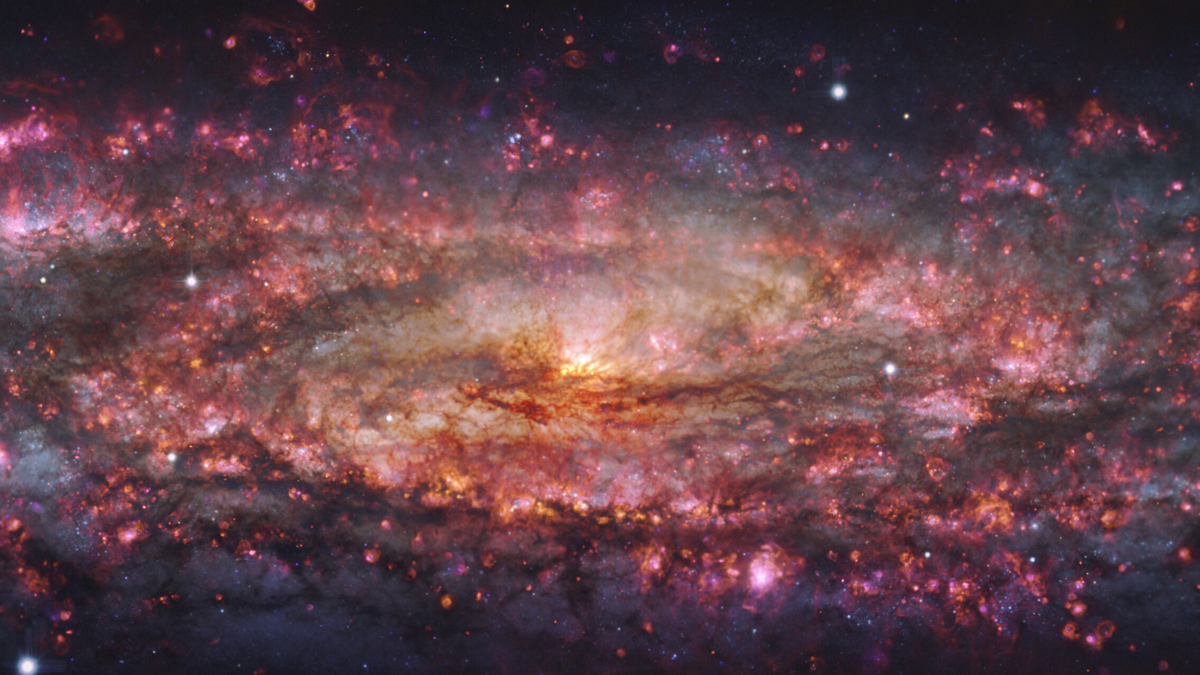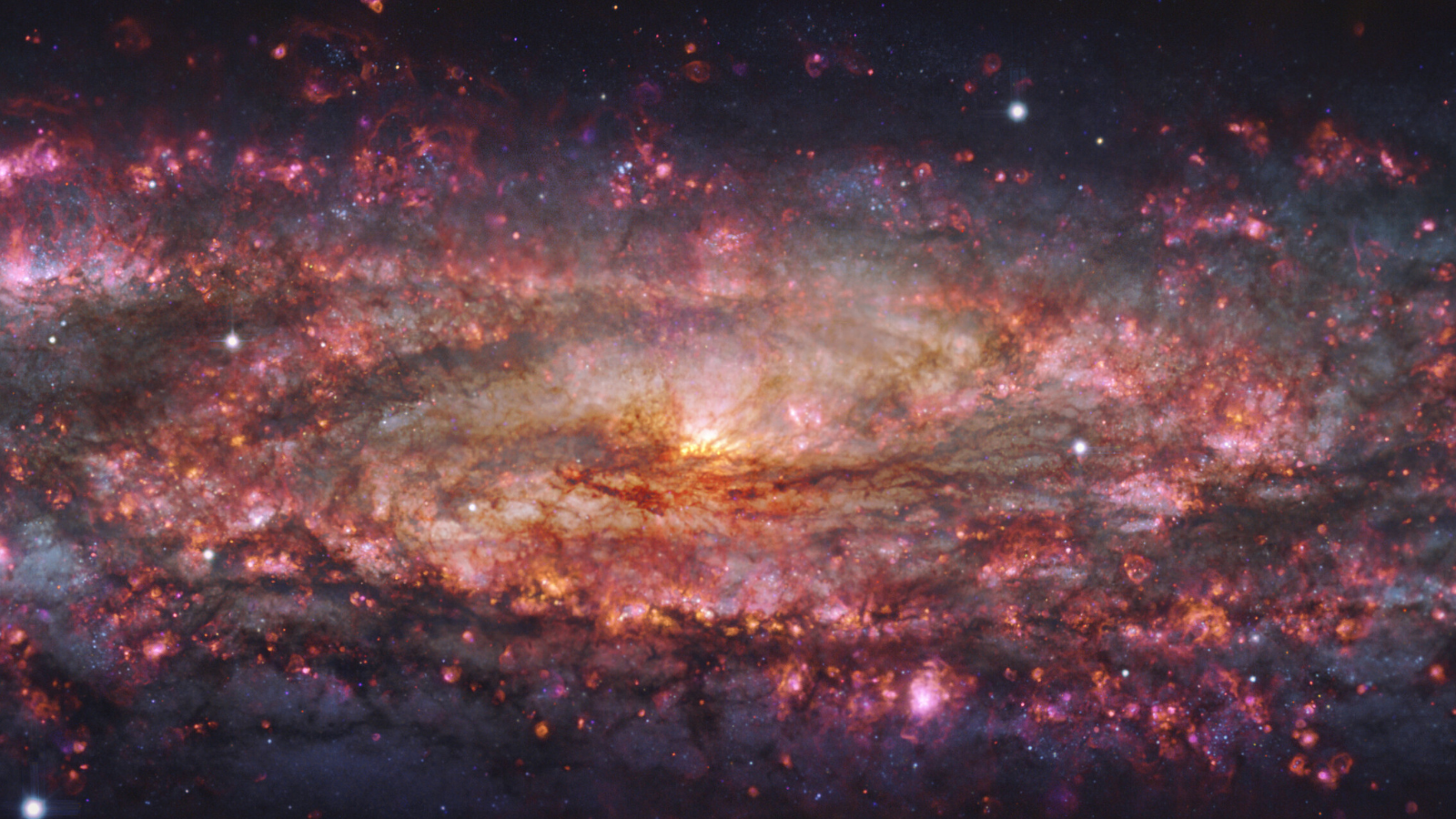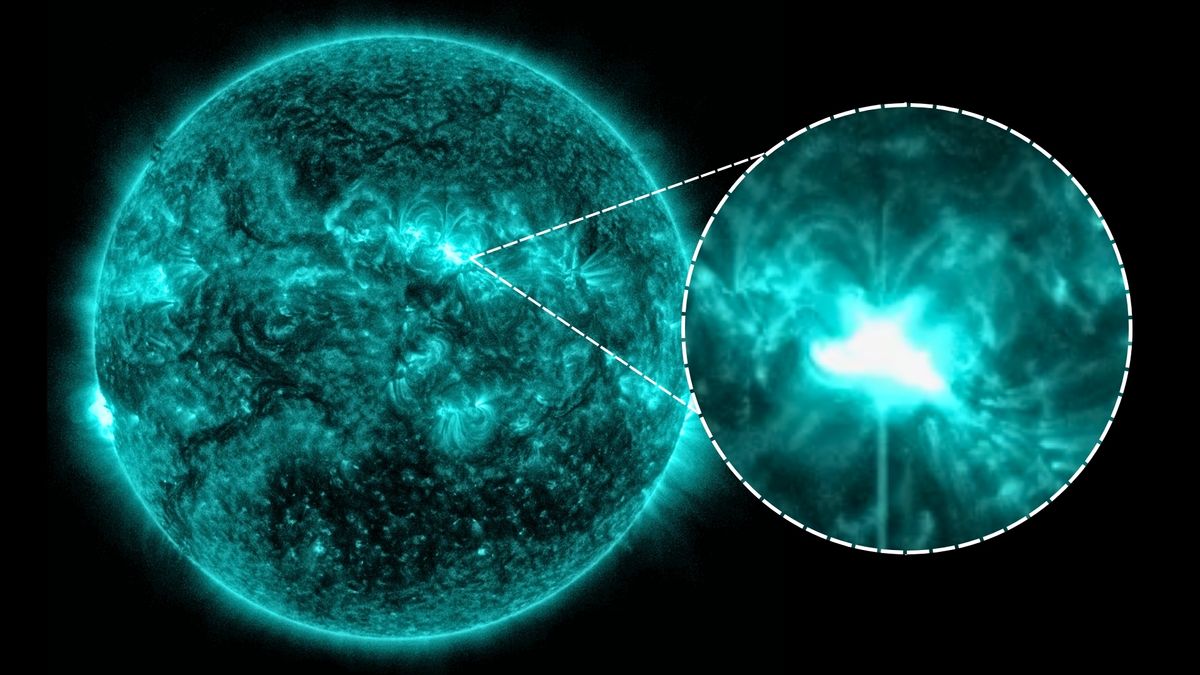Astronomers have obtained a stunning new image of the Sculptor Galaxy, painted in thousands of colors that reveals the intricacies of galactic systems.
The incredible image of the galaxy — located around 11 million light-years away and also known as NGC 253 — was collected with the Multi Unit Spectroscopic Explorer (MUSE) instrument of the Very Large Telescope (VLT) in Chile.
In addition to providing a galaxy-wide view of the Sculptor Galaxy, the image shows intricate details of NGC 253. As such, it could help to reveal the finer details of the poorly understood and complex systems that are galaxies.

“The Sculptor Galaxy is in a sweet spot,” team leader Enrico Congiu of the Universidad de Chile said in a statement.” It is close enough that we can resolve its internal structure and study its building blocks with incredible detail, but at the same time, big enough that we can still see it as a whole system.”
Covering 65,000 light-years of the 90,000-light-year-wide galaxy, zooming in on the finer details of the Sculptor Galaxy to create this image required 100 exposures collected over 50 hours of MUSE observing time.
That effort was justified by the unprecedented detail revealed in the Sculptor Galaxy VLT image.
“We can zoom in to study individual regions where stars form at nearly the scale of individual stars, but we can also zoom out to study the galaxy as a whole,” said team member Kathryn Kreckel, from Heidelberg University in Germany.

An initial examination of the image has already paid dividends for the team. Within the image, they have been able to discover 500 new planetary nebulae, shells of gas and dust that are ejected from stars like the sun after they “die” and enter a “puffed out” red giant phase.
This is pretty extraordinary, because detections like this beyond the Milky Way and its immediate neighbors are fairly rare.
“Beyond our galactic neighborhood, we usually deal with fewer than 100 detections per galaxy,” said team member and Heidelberg University researcher Fabian Scheuermann.
The planetary nebulae — which, despite the name, have nothing to do with planets — could bear fruit in the future, as they can be used by astronomers to make distance measurements.
“Finding the planetary nebulae allows us to verify the distance to the galaxy — a critical piece of information on which the rest of the studies of the galaxy depend,” explained team member and Ohio State University researcher Adam Leroy.
That’s not to say that the team is finished with this image of the Sculptor Galaxy just yet. The next step for the astronomers will be to explore how hot gas flows through NGC 253, changing composition and helping to create new stars.
“How such small processes can have such a big impact on a galaxy whose entire size is thousands of times bigger is still a mystery,” Congiu concluded.
The team’s research was published online today (June 18) in the journal Astronomy & Astrophysics.

























